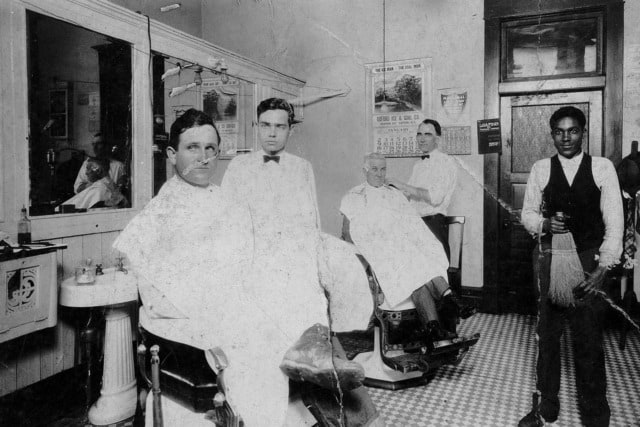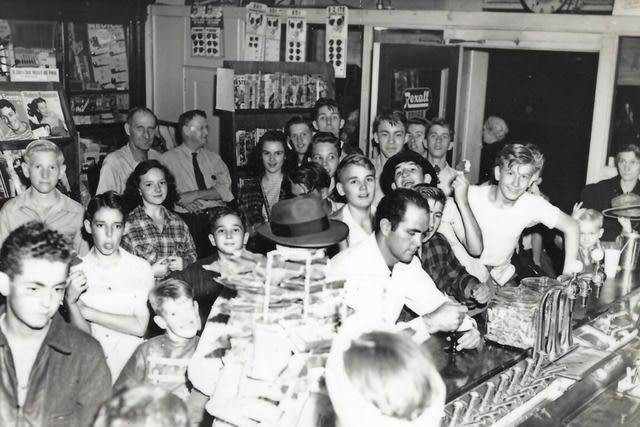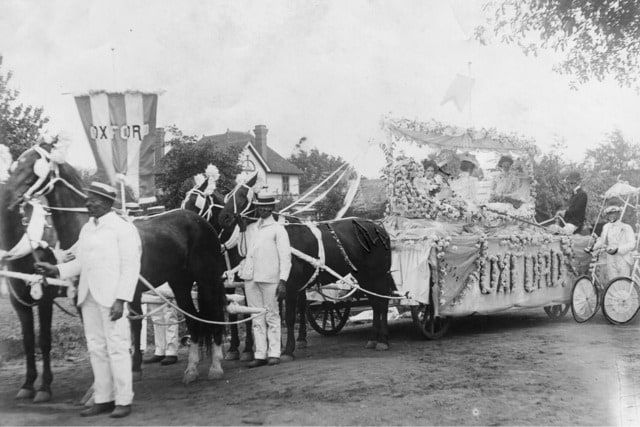The Early Days
Excerpts from Images of America: Oxford
By Hunter C. Gentry
The Muscogee Creek Nation has called the Choccolocco Valley home for 12,000 years. In 1540, Hernando DeSoto crossed the region on behalf of Spain in search of riches. France claimed the lands in 1699 after successfully establishing settlements at Mobile, New Orleans, and Biloxi. Even though France controlled the area that would later become Oxford, it was still inhabited by the Creek Nation. England gained possession of the lands after the signing of the Treaty of Paris at the end of the Seven Years War. In 1789, the entire northern portion of Alabama was owned by Georgia. The federal government gave the lands in 1802 as part of the Mississippi Territory.
Alabama was admitted to the Union on December 14, 1819. Benton County was incorporated on December 18, 1832, and included present-day Calhoun, Cleburne, and portions of Cherokee and Talladega Counties. At the time of incorporation, the only incorporated towns in Benton County were Jacksonville and White Plains. During the early 1830s, the Snow and Simmons families were two of the first European descent families to settle among the Creek natives of the area. Snow owned the land south of present-day Choccolocco Street, and Simmons owned the land north. An early legend recalls that the area south was called “Skace Grease” and the area north was called “Lick Skillet.” Local folklore states that a traveler was passing through and needed a place for rest and food. While visiting a local, he was directed to “lick the skillet” because they were “skace of grease.” The boundary line separating the lands was a creek that flowed parallel to Spring and Snow Streets.
Due to an influx of families migrating to the area, a post office needed to be established in the community. The first post office was located at the home of Dudley Snow. In 1849, the post office's name officially changed from Snow’s Creek to Oxford. On February 7, 1852, the town of Oxford was incorporated by an Act of the Alabama State Legislature. Stipulations of the incorporation included a certain number of council members, an intendant (mayor), and the limits appropriated within a certain distance from the male academy. It is not clear if the name Oxford was chosen due to the oxen that were brought to ford the creek or if someone suggested it due to the names of Oxfords in Mississippi and Georgia or Oxford, England.
On February 21, 1860, due to the earlier division and name change of Benton County to Calhoun County, Oxford petitioned for a second incorporation. The town was required to elect seven council members and intendant (mayor) and redraw the limits from half a mile from the railroad culvert. After the railroad construction and Oxford Iron Works, Oxford saw increased population and commerce. For decades before the Civil War, the economy was primarily based on self-sustaining agriculture and trade. The people deeply believed in education, faith, and family values. During the Reconstruction period of the South, Oxford boomed with a bustling economy of the cotton trade business.

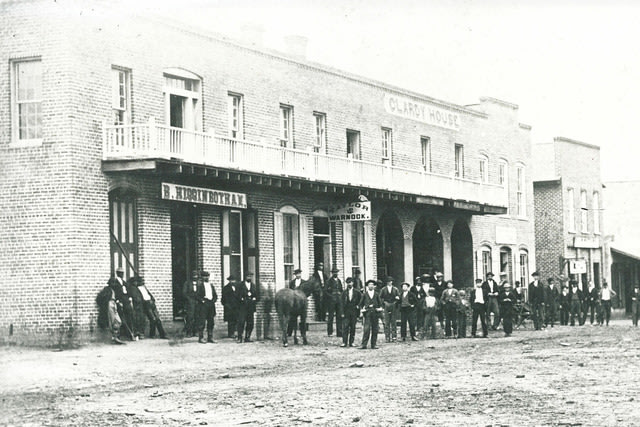
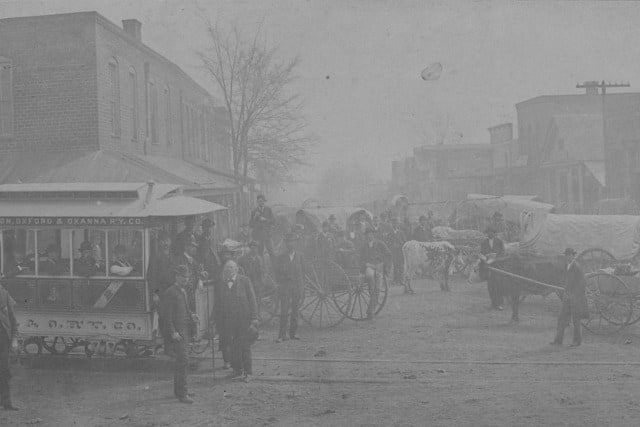
Industry & Commerce
Excerpts from Images of America: Oxford
By Hunter C. Gentry
Oxford’s economy was based on an agrarian society of self-sustaining farmers for generations. The Oxford Iron Company came about shortly after the Alabama & Tennessee River Railway construction from Talladega to Blue Mountain. In the 1870s, cotton trading boomed, with Oxford as the regional hub for planters. The Blue Springs Cotton Mill became Oxford’s first successful industrial corporation. At one time, the downtown commercial district had several drug stores, mercantile stores, millinery shops, furniture stores, hardware stores, a theatre, warehouses, and a funeral home.
The Oxford Iron Company was organized as a private corporation in November 1862 to manufacture iron to aid the Confederate State Army. The land for the company was purchased from Daniel P. Gunnels and included 825 acres in present-day Anniston near Fourth Street and Wilmer Avenue. The furnace was built of cut sandstone native to the area and situated on ten to fifteen acres of flat land. A natural spring flowed directly to the furnace to continuously produce 20 tons of iron daily. The final product was shipped directly to Selma via the Alabama and Tennessee Railroad. In April 1865, under the direction of General John T. Croxton, Union troops burned the furnace to the ground during a raid to seize and destroy anything that would aid the Confederate States Army.
The first tracks of railway in Alabama were laid in 1832 in the Muscle Shoals region. New economic opportunities spurred from the construction of the railroad. The railroad stimulated growth for the development of nearby towns and communities. Transportation of goods and people became much more efficient than before. In 1848, the Alabama & Tennessee River Railway was created. The first tracks connecting Talladega to Oxford were completed in 1861 and a depot was completed soon after. Completion of the railroad for Oxford meant economic growth. In 1866, the railroad was consolidated and renamed the Selma, Rome, & Dalton Railroad. The railroad in Oxford was used during the Civil War to aid the Confederate States Army in delivering products produced by the Oxford Iron Company. Raiders destroyed the depot and railroad at Oxford during the Civil War. Topped with a cupola, a new depot was constructed at the former site of Oxford’s depot in 1883. In 1881, the railroad was sold to the East Tennessee, Virginia, & Georgia Railway.
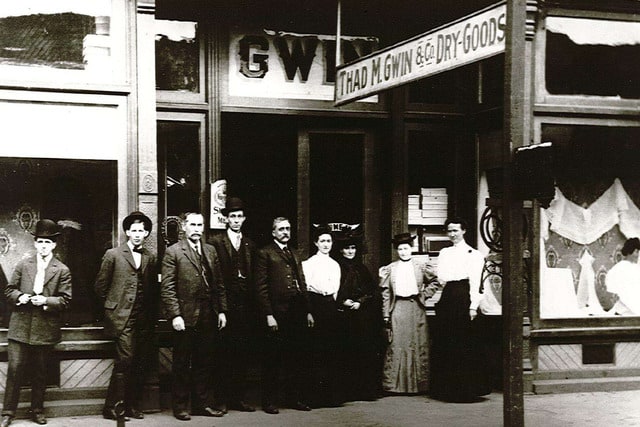
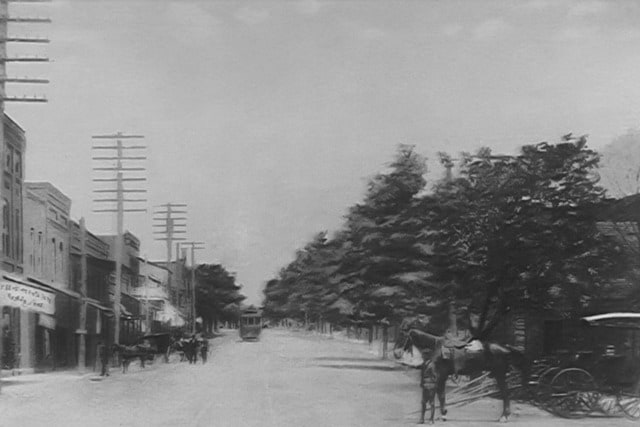
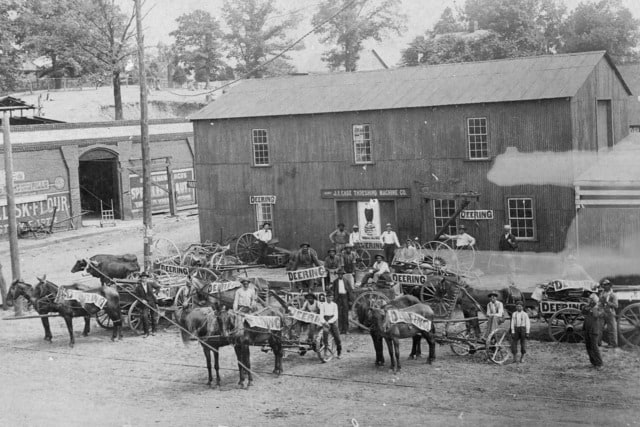
Around the Town
Excerpts from Images of America: Oxford
By Hunter C. Gentry
When Oxford was founded in 1852, the town limits encompassed the nucleus around the male academy at Second Street. After decades of continued growth for Oxford, the city began to annex and incorporate neighborhoods and communities that had existed since the same time Oxford was established.
Bynum, west of Oxford, was referred to as “Pig Tract” in the earlier years due to the vast amount of pig farms in the area. Eli Bynum came to Benton County from Blount County in the 1830s and established a large farm. After he died in 1876, his son, Eli Bynum, inherited 1,000 acres and eventually passed the land to his son, Tapley D. Bynum. When the Georgia Pacific Railroad began coming through the area, he agreed to the right-of-way access with the condition that the stop was named for his family.
Eastaboga, west of Oxford on the Talladega and Calhoun County lines, was named McFall until June 29, 1923. “Eastaboga” is a creek native word derived from “Isti,” meaning people, and “Apoga,” meaning dwelling place. It was also referred to as “Shakerag.” A post office was established there in 1854.
Coldwater, west of Oxford, was settled by Chesley Hughes in about 1834. The name is derived from the nearby creek that constantly flows cold water. A post office was established there in 1879, originally called Marthadell. The name was changed to Coldwater in 1894. The post office was discontinued in 1907.
DeArmanville, east of Oxford towards the Choccolocco Valley, was settled by John W. DeArman in about 1833. It is said that DeArman traded ponies for the land between Oxford and White Plains from Chief Oconee. The area was originally called Center but had to change its name due to another nearby town in Alabama with the same name. It was named DeArmersville in 1873 when a post office was established there and to DeArmanville in 1878. Hudson H. Allen was also an early settler in the area. The DeArman and Allen families held stock in the railroad that passed through their lands.
Other unincorporated communities in Oxford were Boiling Springs, Hicks, Friendship, Knoxville, Lardent, Trinity, and Boozerville. Boiling Springs was named for its continuous flowing spring. A post office was established there in 1846 and discontinued in 1854. Hicks is named for the Hicks family that purchased a hundred acres in the 1960s. Friendship is named for the friendliness of the people there. Knoxville is a community of predominantly African American families, specifically the Knox family. Lardent was named by the railroad for the area between Anniston and Oxford. Trinity is named for the church and school that was established in the area. Boozerville is named for the area in the southern portion of Oxford for Judge Simon E. Boozer that owned the land.
